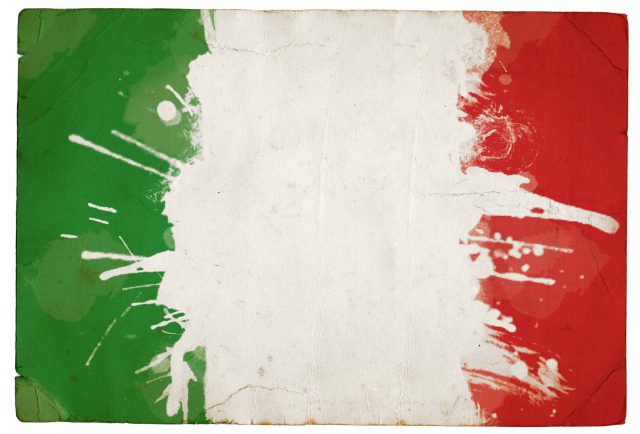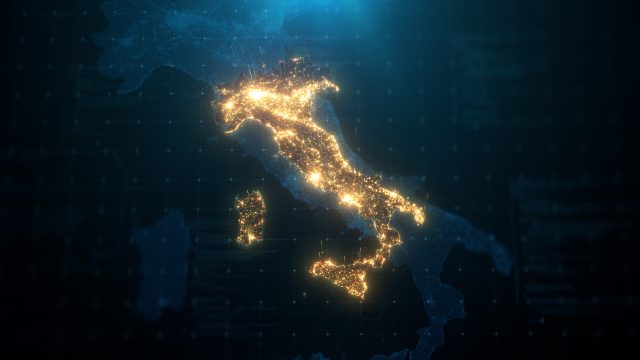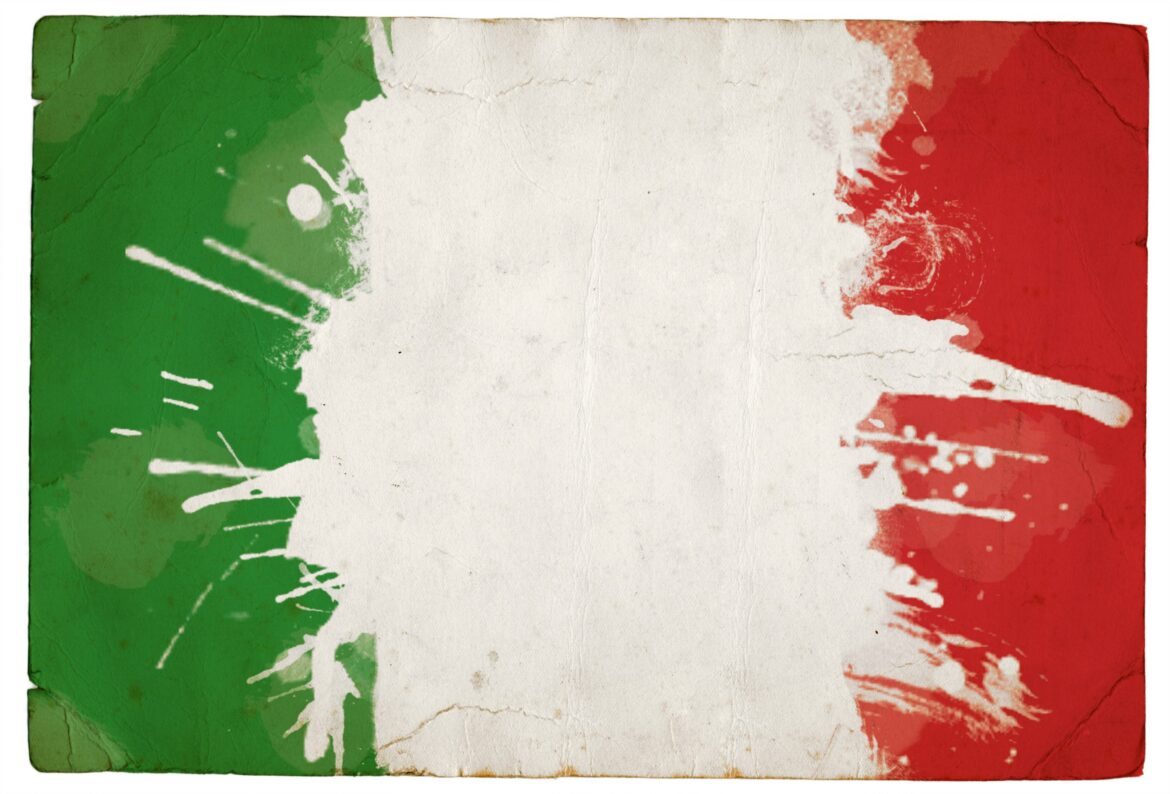Trump’s yo-yoing tariffs call into question whether the US will continue to be the biggest importer of Italian wine. According to insiders July is the “critical month” which will determine the future ‘special relationship’ between the two nations. Sarah Neish reports.

Last year the United States represented almost one-quarter (24%) of Italy’s overseas wine sales, making it the country’s largest export market by a long way. However, with EU nations subject to flip-flopping tariffs under President Donald Trump’s administration, Italian producers are now stuck in a kind of purgatory.
“The industry is essentially in a holding pattern awaiting Washington’s next move, with US wine businesses caught between bursting warehouses and the threat of a price shock that could send everyday Italian wine off US shelves entirely,” Nunzio Castaldi, president of New York-based wine importer Panebianco Wines, which works with more than 50 Italian producers, tells db.
“July is the critical month. I would be very satisfied if Washington and Brussels at least engineer an armistice where they agree to keep the current tariff rate of 10% for the remainder of 2025. If this happens, I can foresee only a single-digit dip in Italian wine inflows.”
If a solid agreement is not reached in July, warns Castaldi, then “the US wine trade faces a summer of 50% duties as announced already by Washington DC”. Not one to mince his words, he declares simply: “That will be devastating.”
Entry-level wines to be hit hardest
According to Castaldi, it’s the “entry-level and mid-tier segments” of the Italian wine sector that are most vulnerable if tariffs climb – those bottles priced between US$10.99 and US$15.99. As is almost always the case with fine wine, “US buyers of high-end Brunello, Barolo, Super Tuscans and so on will absorb price hikes better than the value end.”
Stefano Girelli, co-founder of The Wine People, a Trento-based exporter that sells wine from across Italy to more than 43 different countries, including the US, underlines this conviction. “The wines most likely to be affected are those in the entry level. They are highly sensitive to even small price increases as they compete in a very crowded and price-driven market,” he says. “Our premium and niche wines may be slightly more resilient, as they attract a different type of consumer who tends to be more quality-focused than price-sensitive.”
Castaldi namechecks Pinot Grigio and Prosecco as among those wines likely to be sucker-punched by higher US import tariffs. “In my opinion wines like Pinot Grigio Delle Venezie, and entry-level Prosecco – outside the [higher-value] Conegliano, Valdobbiadene or Asolo areas – will be at risk,” he says, although the DOC Delle Venezie reassures the drinks business that it has “been closely monitoring the data” and “has not experienced any significant setbacks due to the introduction of tariffs” so far this year.
No hyperbole
It’s certainly not hyperbole, though, to say that some Italian wines could be pushed off US shelves completely by the tariff changes. Saying that he is “obviously very concerned by these unnecessarily protectionist and anti-historical measures”, Davide Acerra, communication and marketing manager for the Consorzio Tutela Vini d’Abruzzo, explains the domino effect that the tariffs could end up having.
“The official data (from UIV Observatory) shows that the average export price to the US is €5.35 per litre for Italian wine, with only 30% of ‘popular’ wines in line with this figure (€5.26). Over half are well below this, at about €3.53 per litre. Additional tariffs of 20%, not managed fairly between the parties, would end up pushing these wines into the immediately higher, ‘premium’ bracket,” he says.
“However, premium Italian wines currently account for 17% of volume and would not be able to absorb this transfer from the lower range, inevitably pushing our product [Abruzzo wines] out of the market.”
Losing out to competition
Because of this, individual producers and regional bodies across Italy are understandably concerned about losing out to competition from other winemaking countries when it comes to US listings. “The risk is losing market share to countries less affected by tariffs, such as Chile, Argentina, New Zealand and Australia,” says Acerra.
Again, this is not fear-mongering, but a genuine possibility. Torrey Grant, former account executive for Italian-specialist PR agency Colangelo & Partners, has recently moved on to a new position as wine director for New York restaurant Leonetta. He admits: “On the restaurant side, I’m looking for regions where additional tariffs may not be enacted, such as Georgia, Armenia and – here at home – the Finger Lakes, Oregon and Washington State.”
During his time with Colangelo, Grant adds that he noticed a reduction in SKUs from particular regions take hold. “Whereas five or six years ago an importer may have carried two or three brands from a region like Puglia, now they are cutting back, or at the very least less likely to look at new producers to add to their portfolio.”
There can be no doubt that US importers are under the heel, something that Italian producers are all too aware of.
“At the moment, our customers are under tremendous pressure to reassess their entire portfolio of imported wines, and many are holding off on major decisions until the situation is clearer,” says The Wine People’s Girelli. “We need clarity on what the final and definitive tariffs on imported wine will be. In the meantime, we are staying as flexible as possible and preparing for different possible scenarios.”

Erosion of relationships
That’s not to say it isn’t placing strain on longstanding relationships, sometimes forged painstakingly over decades. “Importers who front-loaded inventory in late 2024 are now pausing reorders indefinitely, creating tension with producers who are expecting consistent, year-round orders,” says Castaldi of Panebianco Wines. “This uncertainty is creating many problems for the health of the relationship between an importer and a producer.”
First, the winery faces a cash flow issue, then a loss of bottling plan projection and finally, and most importantly, disruption to its harvest planning.
“With cost uncertainty due to the unpredictability of the tariffs, importers are requesting deeper discounts, longer payment terms, or delayed shipments; many of which Italian producers cannot afford to grant,” explains Castaldi.
Ultimately, this new relationship dynamic is “causing strong and longstanding bonds between parties to erode into purely transactional relationships”, he says.
Stay alert
Confirming this from the producer side of the fence is Roberta Bricolo, president of the Custoza DOC and owner of her family wine brand Cantina Gorgo. She believes Italian wineries need to be eagle-eyed in the current climate. “We have to stay alert. Some players in the US might try to take advantage of this situation to push down prices or reduce demand unfairly,” she says.
“That’s why it’s so important to remain firm on value – we should never undersell the quality of Italian wine. Sticking together, being consistent on pricing and choosing trustworthy partners will be key.”
Similarly, the Consorzio per la Tutela dei Vini della Valpolicella has noticed a degree of unrest. “The regulatory uncertainty and fluctuating import costs have inevitably caused some operational tension, particularly for small and medium-sized producers,” says Tommaso Accordini, who handles communications for the consorzio. “Our role is to keep the dialogue open and provide support to help our producers and partners navigate these challenges together.”
Others, like Girelli, are sticking to valiant optimism.
“While the situation is not fully resolved yet, I’m confident that our relationship with our importers will come out even stronger once things settle down,” he says brightly. “Difficult moments often reinforce trust and collaboration when they are handled with transparency and shared goals.”
What can producers do?
It would be unwise for Italian wine producers to bury their heads in the sand concerning the challenges with this most important market, but there are things they can do to minimise the severity of impact in both the short and long term.
“Wineries have to be very targeted in their approach to finding new trade partners,” says Torrey Grant. “Aligning their philosophy and winemaking ethos with that of the retailers, restaurants and importers they work with will be vital. While being family-made and small-production is always going to be of interest to me at Leonetta, a large restaurant or retail chain needs a partner who can speak to their needs just as much as a niche shop or restaurant does.”
For Brunello producer Poggio Antico, the key is to keep working on visibility and prestige.
“There are no shortcuts. We need to travel, be present in the market, We can offer something authentic to those who visit us; we make people feel at home. The most successful wineries will be the ones that can bring that experience to the US and share it directly with consumers there.” In Poggio Antico’s case, the producer shipped a “significant amount of wine” to the US ahead of time, which “helped us to minimise potential price increases for the final consumer”. At this stage, says Bogi, “we don’t foresee a drop in volumes of Poggio Antico sold in the US.”
Additionally, there are those who believe that standing firm on price is an absolute must. “Italy should not – and cannot – compete on price alone,” insists Accordini from the Valpolicella consorzio. “Our strength, now and in the future, will be our ability to connect emotion with real value.”

Looking elsewhere
Unsurprisingly, with the trade landscape currently so uncertain in the US, Italian producers are casting their eyes elsewhere to make up for lost revenue.
“We are actively working to diversify our export portfolio, and are particularly focused on Canada, Northern Europe and Asia – especially Japan, South Korea and Vietnam – as well as emerging markets in South America, where the culture of fine wine is growing,” says Valpolicella’s Accordini. “This isn’t about turning away from the US, but rather about building greater resilience by expanding our global footprint.”
Like Valpolicella, the Abruzzo consorzio is also on the look-out for alternative markets. “The current American situation leads us to think about strategies for new commercial outlets, such as the European, Asian and African markets,” says Acerra. “The risk of a decline in consumption is evident, and it will certainly be important to diversify. The consortium will work on opening up new markets.”
Futile nature
Others are frank about the futile nature of attempting to plug the gap left by dwindling US sales.
“You can’t just drop the world’s biggest and most important wine market overnight – and there’s no real substitute you can turn to on the spot,” says Roberta Bricolo of the Custoza wine appellation in the Veneto region of northern Italy. For this reason, she adds, the US tariffs should not be seen as “a dealbreaker”, but as a moment to rethink and adapt.
“We need to go beyond simply shifting focus to other markets. What’s really needed is a more proactive approach – marketing that builds stronger emotional ties with consumers and creates new opportunities, even in a complicated environment like this one. That means Italian producers working together through smart export networks, with the support of embassies and trade organisations, to open doors, host B2B events and build lasting partnerships with US importers.”
With Italian Pinot Grigio arguably among those most exposed to damage by potential US tariffs, the Delle Venezie DOC states that the United States “remains our primary and most significant export market”. Currently absorbing more than 40% of certified DOC Delle Venezie exports, the US market “is extremely difficult to replace in terms of volume and long-term brand recognition”, admits Stefano Sequino, director of the Delle Venezie DOC Consortium.
“From our perspective, it is essential to maintain a stable and diplomatic trade relationship with the US to prevent the implementation of restrictive measures that could harm producers and exporters on both sides.”
That said, in recent months, the Delle Venezie DOC has launched promotional activities in emerging markets such as Mexico, Brazil, Singapore, Vietnam and Japan.
Two-pronged approach
It could be that a two-pronged approach is what’s needed to, if not exactly strike gold, then at least stay afloat. As well as exploring alternative markets, the Abruzzo consorzio has also been investing in less saturated parts of the United States.
“Whereas previously we focused solely on New York, California and Florida, today we are involving smaller US cities and states that are less frequented by the sector,” says Acerra.
Despite the tightrope that Italian producers are currently being forced to walk to maintain access to the US market, there is hope that the Italian communities within the United States could end up being their salvation.
“We need to reconnect with the Italian-American community and with those in the US who already feel a strong bond with Italy,” says the Custoza consorzio’s Bricolo. “Getting Italian-American chefs, artists and influencers involved to help tell our story could create real connection and empathy with American consumers. “
Despite temporary challenges, adds The Wine People’s Girelli, “the cultural and emotional connection between the US and Italian wine – born from the immense popularity of Italian cuisine and the strong presence of Italian restaurants across the United States – remains strong, and we believe this will continue in the long term.”
The final word goes to Torrey Grant, who has spent 13 years working in the US wine trade, wearing many different hats, from events co-ordinator and wine writer to sommelier: “The wine community is nothing if not resilient – and if after July there is an increase in tariffs, the wine industry will respond.”
Related news
Breakthrough in Italy’s de-alcoholised wine ‘deadlock’
Seven talking points from Vinitaly 2025 (apart from tariffs)
Where to drink in Verona this Vinitaly

